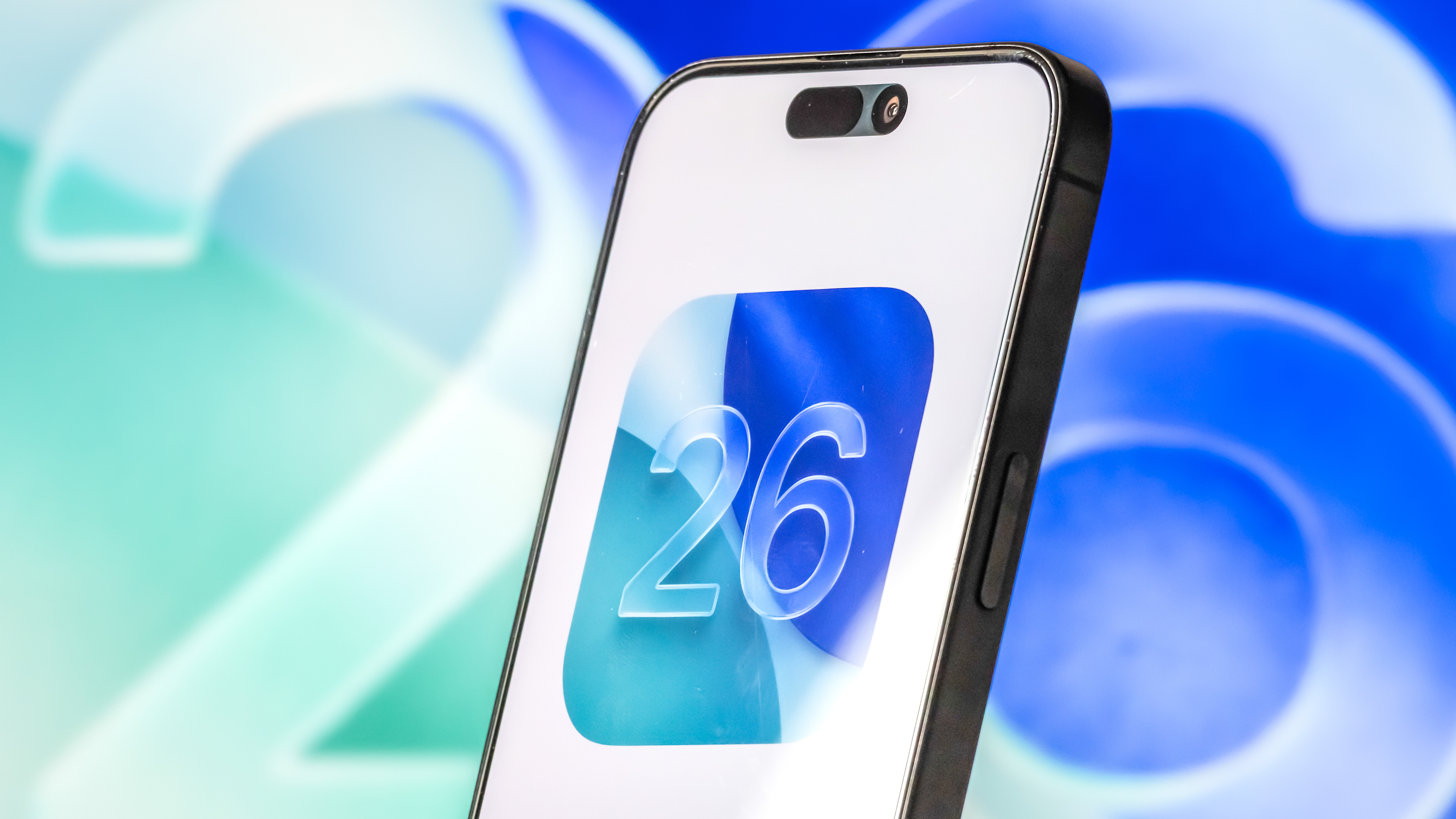I’ve been testing the Apple Watch’s new training load feature in watchOS 11 — here's the pros and cons
The Apple Watch can now help you keep your training on track
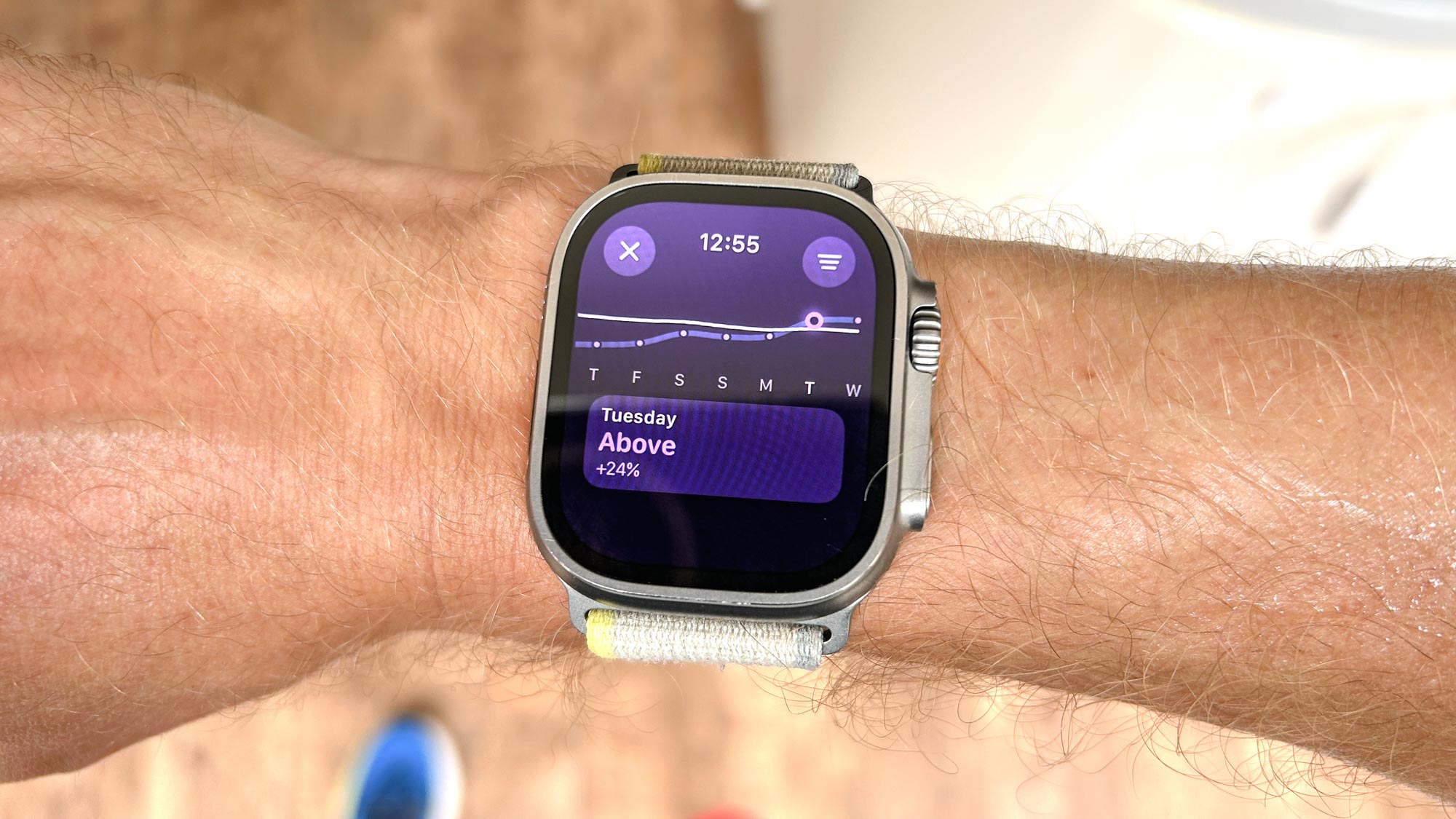
The Apple Watch is one of the best smartwatches first and foremost, but it’s also a great sports watch and each year it adds more and more features for athletes. The most exciting update in watchOS 11 for sports is the addition of training load, which I’ve been testing over the past few weeks in the watchOS 11 beta.
Before testing the training load feature on the Apple Watch Ultra 2, I spoke to Craig Bolton, director of fitness technologies at Apple, about the new feature and the approach Apple has taken with it.
Overall I like the amount of user feedback Apple’s training load feature relies on compared with other brands, but you will get more detail and advice from the best sports watches made by Garmin and others.
What is training load?
Training load is a common feature on many sports wearables and the best Garmin watches and it helps you judge your effort in workouts and keep your overall load balanced.
“This concept of training load has been around for decades in the athletic and sporting community,” says Bolton. “But the principles of it apply really to anyone who's working out on a regular basis.
“The general notion is to analyze your training data and information and work out whether your current training is increasing or decreasing at a rate which is going to help you maximize your performance and hopefully reduce the risk of injury and illness.”
How does training load work on the Apple Watch?
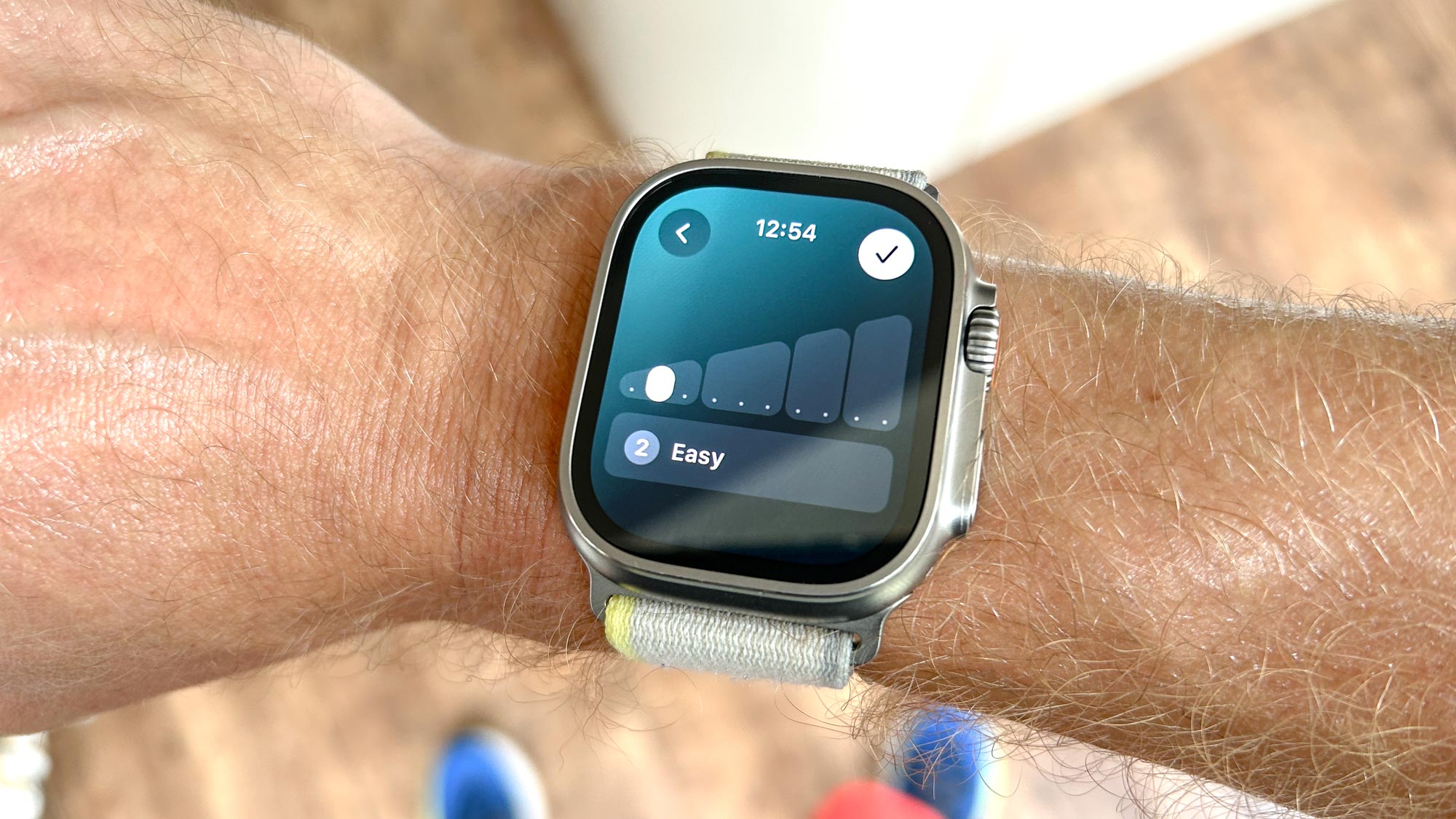
You rate the effort of each workout you do on the Apple Watch on a scale of 1 to 10, with 1 being a very easy session and 10 being an all-out effort.
Get instant access to breaking news, the hottest reviews, great deals and helpful tips.
The watch also automatically assigns an effort rating to popular types of cardio workouts. This is based on factors like workout duration, heart rate and age, and you can still adjust this yourself if you think the rating is incorrect.
After 28 days of use, during which time you set your own personal baseline, these individual effort ratings for each workout are then combined into your 7-day and 28-day training load. These are compared to see if your recent 7-day training load is above, below or about the same as your 28-day load.
“We've chosen seven and 28 because they align with the literature in this space and they’re also very intuitive for users to understand,” says Bolton. “Effectively what we're looking at and trying to help the user with is understanding how that recent strain on their body compares against the longer-term view over 28 days.”
On the Apple Watch, your 28-day baseline is shown as a white line, with the 7-day load shown as a color-coded line. Your recent strain is shown underneath as a percentage above or below your baseline and rated as well below, below, steady, above or well above your average.
Pushing your training load above your normal levels will help you get fitter, but it's also something that you might not be able to sustain safely for long periods without risking injury, especially if you're load is rating as well above normal on the watch.
What I liked about the Apple Watch's training load
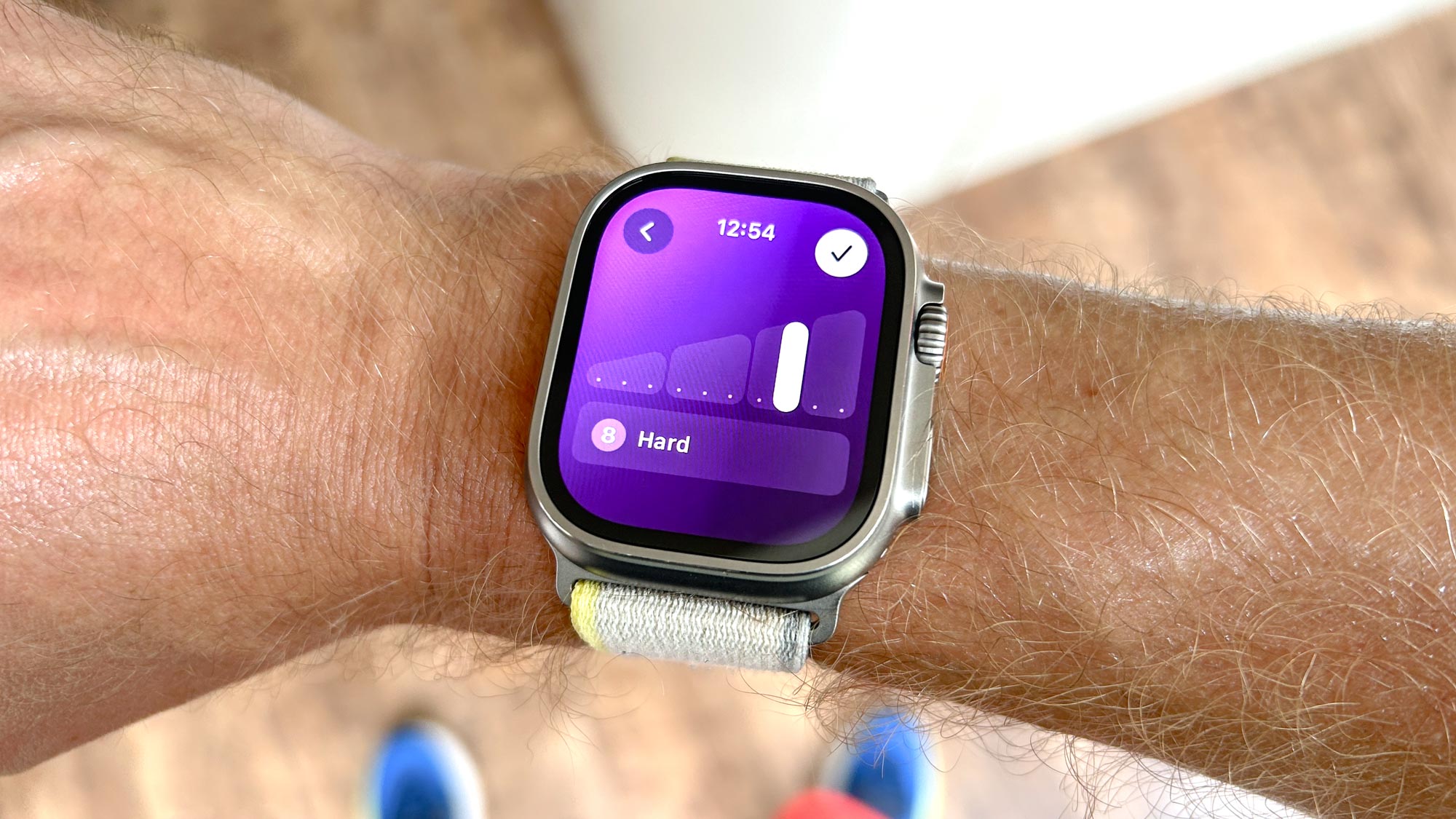
The key feature of training load on the Apple Watch is that it relies heavily on user input, which is different to most sports watches that calculate your training load automatically using data from workouts, and you can’t then change this.
I really like that you can adjust the effort rating on the Apple Watch for two reasons. One is that a sports watch knows less than you about your training that day, and whether it was affected by other factors like a stressful morning meeting or an upset stomach after breakfast.
Two is that watches that rely on heart rate in particular for their training load data can end up with bad information going in if the heart rate data is incorrect, which is not an uncommon problem with optical heart rate sensors on watches — I usually use a chest strap heart rate monitor like the Wahoo TRACKR instead to get more reliable results.

For example, if I did an easy run with another sports watch and the Apple Watch Ultra 2 and my heart rate data was inaccurate on both watches, or they failed to read my heart rate at all, my training load with the sports watch would be skewed by that data.
In contrast, with the Apple Watch I can adjust the effort rating of the workout myself to give an accurate reflection of how hard or easy the run was, and my training load for that run will be correct.
Although the Apple Watch will give estimates of effort for many types of workouts, giving users the final say was a vital part of Apple’s approach to training load, says Bolton:
“We have powerful algorithms using the sensors on the watch to generate the effort score, but we also recognize at the end of the day, the athlete may for whatever reason want to adjust or input that score. That was a really important principle when we were creating this feature, that the user ultimately could have input on how hard that training session was.”
I also found the feature to be visually attractive and like that you can add it to your watch face as a complication. You can also assign effort ratings to workouts not tracked by the native Workout app, though you won’t get an estimated effort score from Apple for these.
The fact you can rate the intensity of your workouts yourself also makes it easier to account for non-cardio training with Apple Watch training load, such as strength sessions.
What I didn't like about the Apple Watch's training load
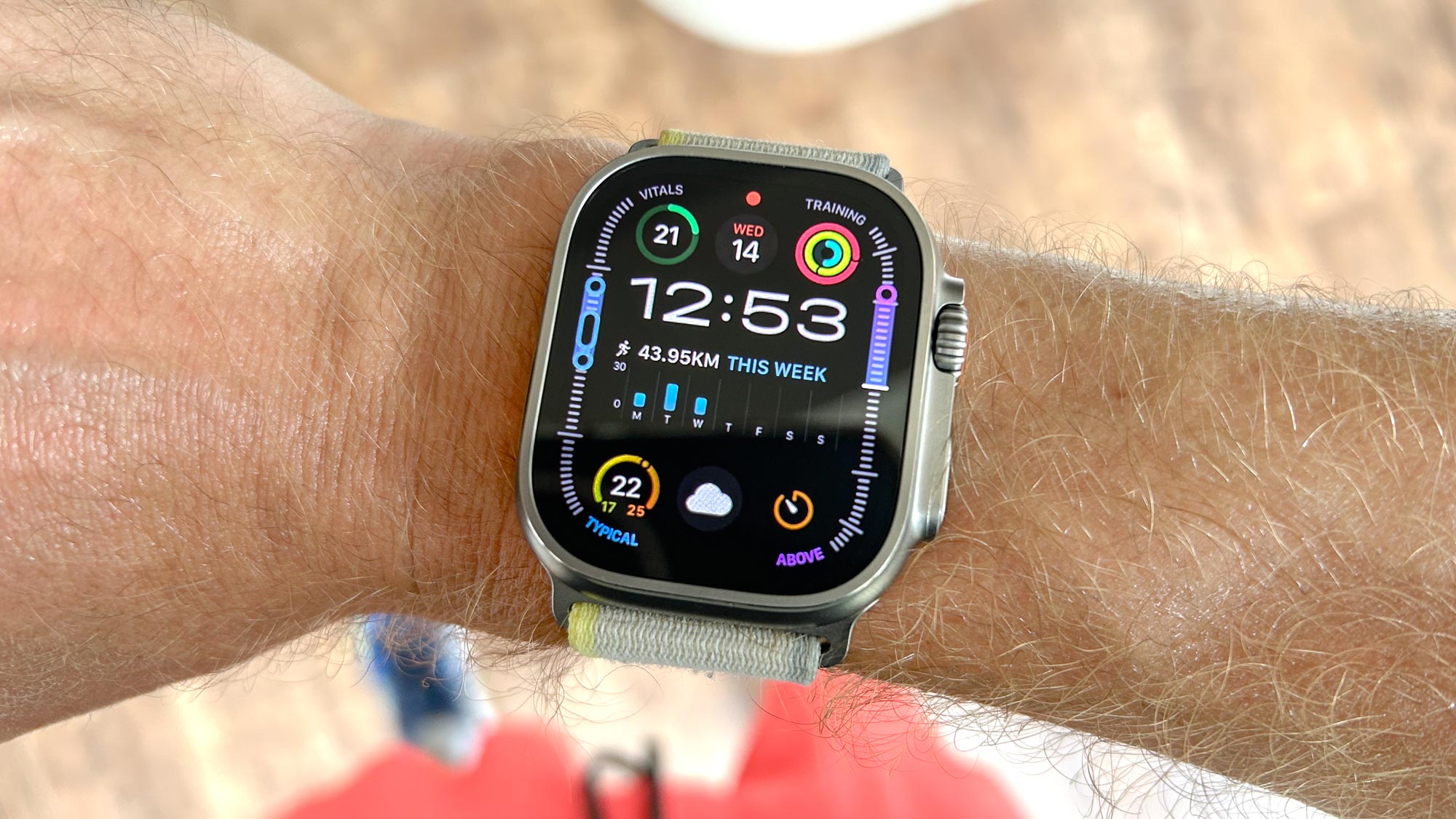
Top sports watches often go beyond simply rating your overall training load, breaking down your training by different benefits like anaerobic vs aerobic fitness, and also suggesting workouts you can do to keep your training load balanced.
The Apple Watch won’t do this, and is unlikely to become more prescriptive because of Apple’s approach in general in this area, which is to inform rather than dictate.
While I certainly agree with the idea that watches shouldn’t dictate your training, the extra information you can get from Garmin devices can be useful, and stats like training readiness from other wearables can make it easier to put the information in training load into practice in guiding how hard you might work each day.
I also found that the Apple Watch struggled to accurately rate the training load of interval workouts, because it mostly seems to use average heart rate for its estimations.
When I did 10 x 1km reps, my heart would spike in the reps then fall in the recoveries, so the average might not be that high, but my effort certainly was. Sports watches that use more information about time in different heart rate zones pick up on the overall training load better.
This can obviously be overridden by changing the effort score, but if you’re just starting a fitness kick and aren’t completely sure how hard to rate your workouts, you might well be relying heavily on Apple’s estimates.
Is the Apple Watch training load feature actually useful?
The simplicity and reliance on user input with training load on the Apple Watch makes it very appealing, and I think it’s a great addition to the watch that can help people understand and improve their training.
Even the process of rating the effort of each workout you do is useful in learning about your fitness and the strain on your body. I also think the approach Apple has taken certainly has some advantages compared with traditional sports watches, which are more prescriptive and can sometimes be unhelpful for users as a result.
That said, I do think experienced athletes who love data and know how to use it to guide their training will get more from top sports watches, which offer more depth and a wider range of stats around training load.
More from Tom's Guide
- How to download watchOS 11 public beta
- How to use Check In on your Apple Watch in watchOS 11
- I tried the new Apple Watch Vitals health app, here’s how it works and first impressions

Nick Harris-Fry is an experienced health and fitness journalist, writing professionally since 2012. He spent nine years working on the Coach magazine and website before moving to the fitness team at Tom’s Guide in 2024. Nick is a keen runner and also the founder of YouTube channel The Run Testers, which specialises in reviewing running shoes, watches, headphones and other gear.
Nick ran his first marathon in 2016 and became obsessed with the sport. He now has PBs of 2hr 25min for the marathon and 15min 30sec for 5K. Nick is also a qualified Run Leader in the UK.
Nick is an established expert in the fitness area and along with writing for many publications, including Live Science, Expert Reviews, Wareable, Coach and Get Sweat Go, he has been quoted on The Guardian and The Independent.
